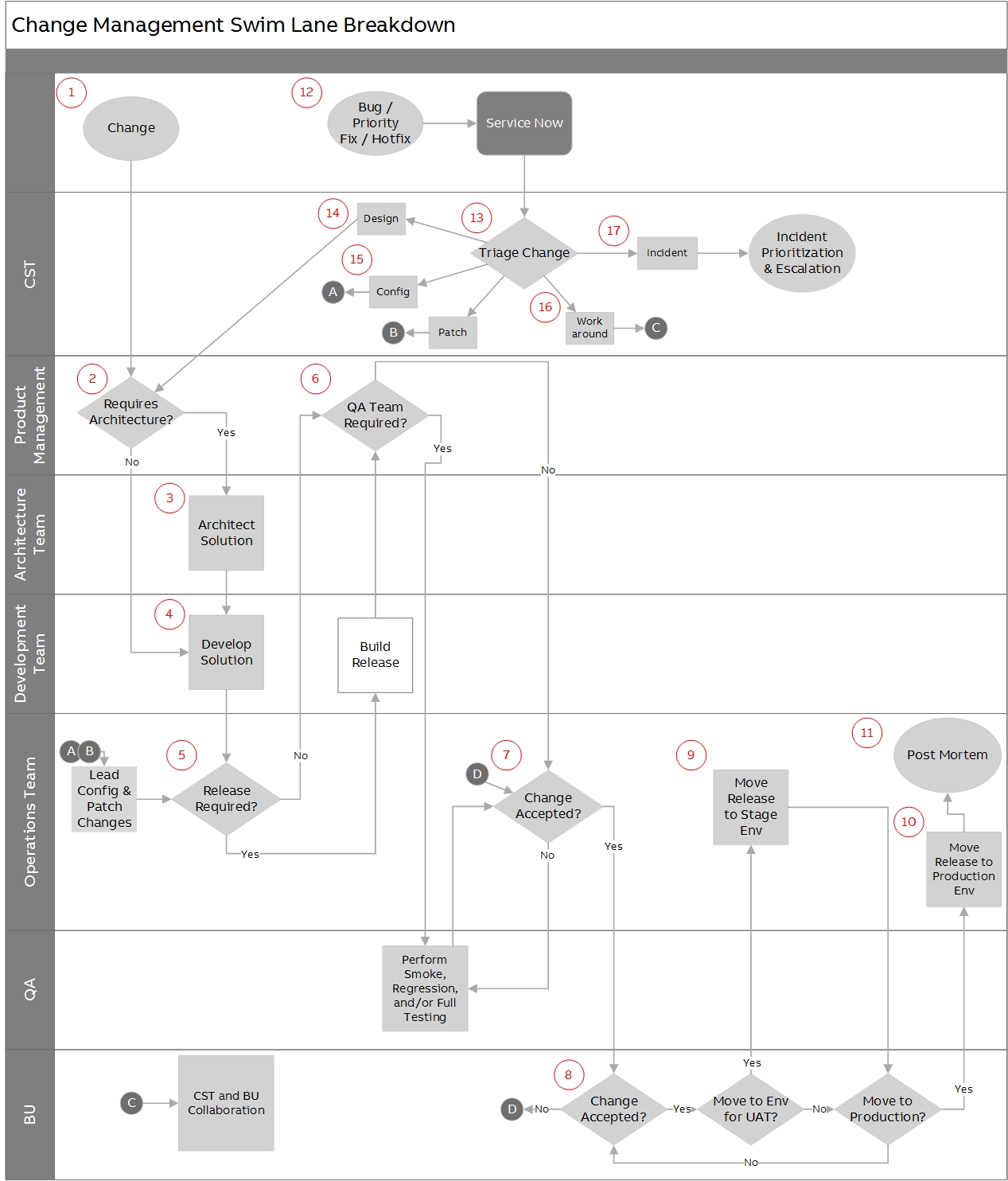# Change Management
The process steps are outlined below. A graphic of the process is also included. A change enters the process at step 1 as a requested change or at step 11 as a bug, priority fix, or hotfix via ServiceNow.
A change is requested by a BL, CST, Architecture, or through the marketplace.
Product Management evaluates the change. If the change is not discarded, the change is scoped, prioritized, and scheduled.
If the change requires architecture, it is sent to the architecture team. If the architecture team determines that the change can be accommodated, then the process continues.
If the change does not require architecture or the required architecture is complete, the change goes to the development team. If the development team determines that the change can be developed, the process continues.
If the change requires a release, the development team will build the release.
When QA is complete, the change goes to the operations team.
Operations evaluates the quality of the change based on defined criteria. If operations accepts the change, it then goes to the BL for consideration.
If the BL accepts the change, the BL considers the level of BL testing required and then requests that the change be moved to the appropriate environment. If the change is not accepted, it is routed back to operations for vetting.
When BL testing is complete, the BL requests that the change be moved to Production.
After the change is moved to Production, a post mortem is completed.
A bug, priority fix, or hotfix is created in ServiceNow.
The CST monitors ServiceNow.
The CST determines what type of change is involved: design, configuration, patch, work around, or incident.
If the change is associated with design, the change is routed to Product Management.
If the change is associated with configuration, it is routed to operations who coordinates with other teams as needed to complete the work and oversee the effort.
If the change is associated with patching, it is routed to operations who coordinates with other teams as needed to complete the work and oversee the effort.
If the change can be accomplished through a workaround, the CST works with the customer to help them understand the workaround.
If the change is an incident, the CST will assign a severity to the incident and follow the appropriate process based on the [Incident Prioritization & Escalation] definition.
# Work Flow Breakdown
Note: For a full-size image, right click and select "Open image in new tab".

